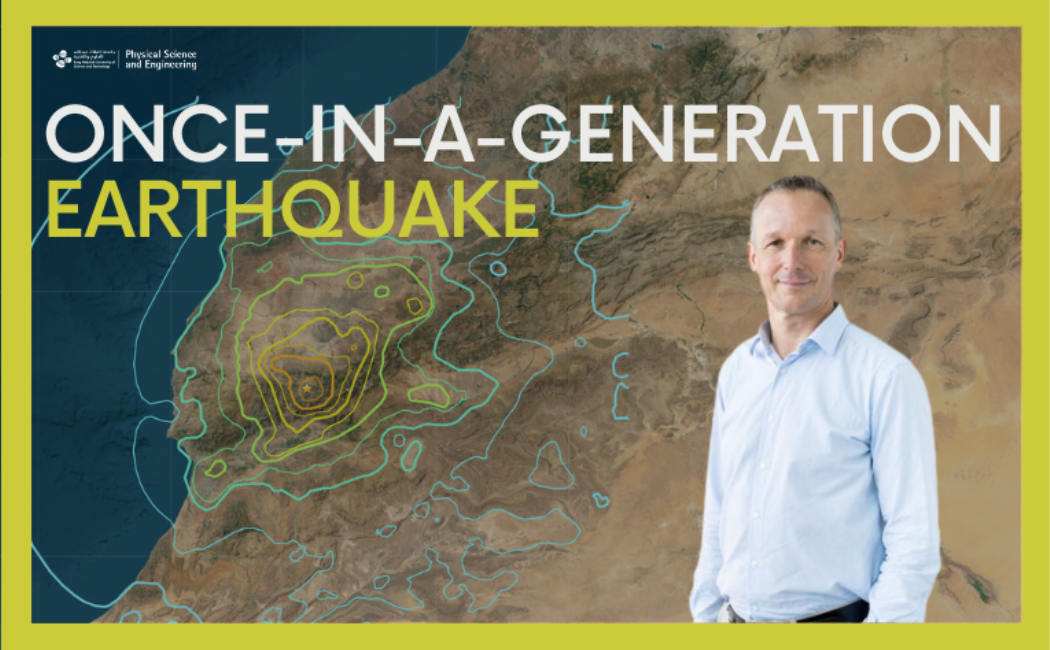
14 September, 2023
On September 8, 2023, at 11:11 p.m. local time, Morocco was struck by an earthquake of magnitude M6.8, with its epicenter located in the rural area of Oukaïmedene, in the High Atlas Mountains 70 km southwest of the densely populated historic city of Marrakesh. Just 19 minutes later, an aftershock of magnitude M4.9 shook the region again. The relatively shallow depth of the main shock - approximately 26 km beneath the Earth's surface - played a crucial role in the extensive damage inflicted upon Marrakesh and the many towns and villages in the region. The area that experienced intense to severe shaking (intensities VI to VIII on the Modified Mercalli Intensity scale) reached an area of over ~20,000 km2, home to ~5 million people. Besides Marrakesh, important cities and historic centers like Agadir, Essaouira, and Quarzazate, frequently visited by international tourists, experienced strong shaking.
Countless structures were reduced to rubble, and the ancient Medina of Marrakesh sustained extensive damage. The death toll is rising: casualties have already surpassed 2,000 fatalities and thousands more were injured. At the time of this report, the numbers continue to increase.
According to Martin Mai, professor of earth science and engineering at the King Abdullah University of Science and Technology (KAUST), the earthquake's origin can be traced to the North Atlas fault, which trends approximately in the northeast-southwest direction across south-central Morocco. "Preliminary analyses of seismic observations show that the earthquake likely occurred on the south-dipping North Atlas fault, with a reverse-faulting rupture mechanism over a fault area of ~50 km lengths extending to about 30 km in depths, with up to 2 meters of displacement between the two sides of the fault," Mai explains. "The strong shaking in the steep High Atlas mountains also generated widespread rockfalls and landslides that themselves destroyed buildings, villages, and infrastructure, and thus complicated search and rescue efforts by blocking access to remote areas."
Not all places are exposed to the same earthquake hazard. On a global scale, 85% of the world's earthquakes occur along the "Ring of Fire," an area encircling the Pacific Ocean. This unstable region is characterized by convergent and transform boundaries and intense volcanic activity. The remaining 15% of the world's earthquakes are found in the Mediterranean-Asiatic Belt, with Morocco at its western end.
The High Atlas Mountains in Morocco were formed during three distinct tectonic phases, the latest being tightly connected to the plate-tectonic collision of the African and Eurasian plates. In this phase, new geologic faults formed, and old geologic structures were reactivated. While the actual plate boundary between the African and Eurasian plates (estimated convergence rate 4-6 mm/yr) is some 500 km further north of the High Atlas Mountains, the faults in the epicentral region are under compression, with estimated slip rates of less than 1 mm/yr. In other words, the long-term tectonic convergent motion of the African and Eurasian plates puts the Earth's crust of the Maghreb region under immense pressure. This tectonic stress is sometimes released as sudden, unpredictable shocks.
"It is important to understand that earthquakes cannot be predicted," highlights Mai, "there is no scientifically credible method to precisely tell in advance when and where an earthquake will happen and how large it will be. We can only prepare for future earthquakes by taking mitigating actions such as constructing earthquake-proof buildings and implementing effective disaster management."
Although seismic activity has been relatively low along the northern margin of the African continent is generally relatively low, the area is no stranger to devastating earthquakes. Among the most recent examples are the Agadir earthquake of 1960 (M 5.6 magnitude and 15000 victims), the 1980 M7.3 El Asnam earthquake in Algeria, which affected 900,000 people, and the 2004 Hoceima M 6.4 earthquake that killed over 600 people. Modern seismic hazard maps (e.g., www.openquake.org) show that seismic hazards are high along the Mediterranean coastlines of Morocco and Algeria but also of significance in the High Atlas mountains.
The science of seismology is to continue studying these events, but we remain far from predicting them. Scientists know, for example, that in the coming days, weeks, and even months, the Oukaïmedene's area will experience many aftershocks, some of which may reach a magnitude >M5, which is strong enough to collapse the already damaged buildings and further complicate search and rescue efforts. Long-term statistical observations show that the largest aftershocks are about one magnitude unit smaller than the mainshock magnitude and that their frequency decays exponentially with time. However, large aftershocks may still occur late in the aftershock sequence. Scientists will deploy additional instrumentation in Morocco and use remote-sensing satellite data to study the details of the earthquake process. At the same time, local and international engineers and building experts will begin surveying the region to assess the local construction practices, understand the damage patterns, and develop future mitigation strategies.
Mai concludes, "At present, the large number of casualties that Morocco experienced is likely to be attributed to local construction practices driven by culture and history, but also aging buildings, especially in the historical Medina of Marrakesh, where even lower magnitude aftershocks may produce damage to the buildings and generate more victims."
Nature remains unpredictable. Humans will continue to be at its mercy. Earthquakes cannot be predicted or prevented. Hence, we must prepare for them. Thanks to geologists, geophysicists, and earthquake engineers, tight collaboration between scientific disciplines, and close communication with local and national stakeholders and communities, we can face natural hazards in a safer way.